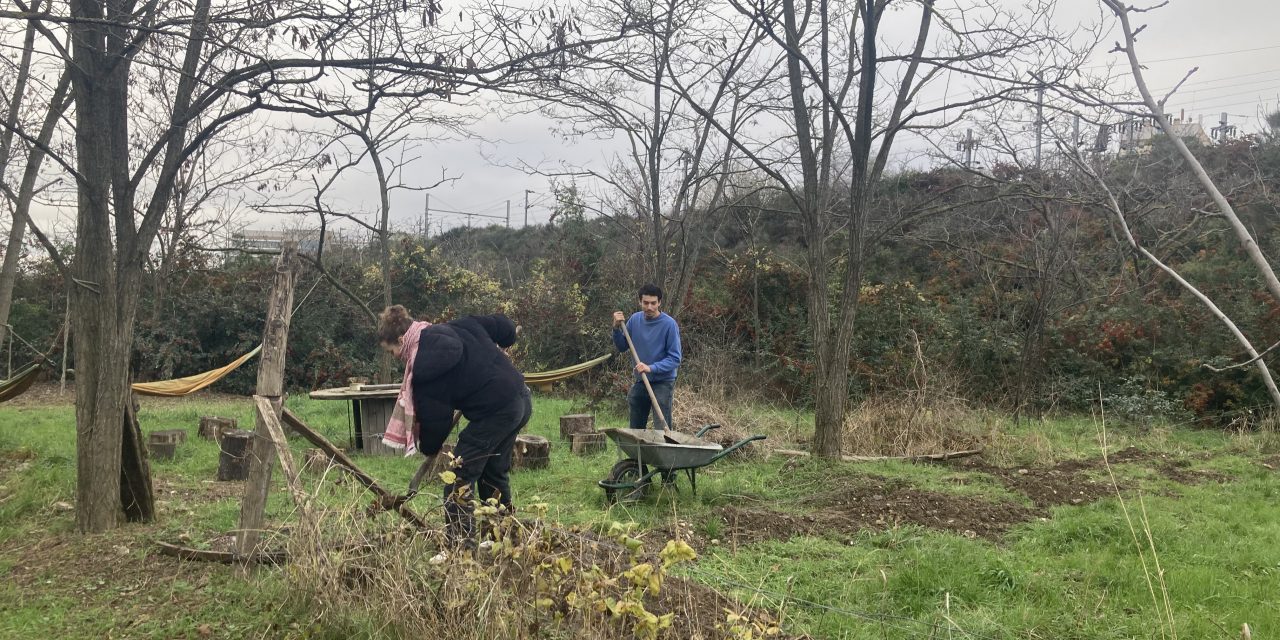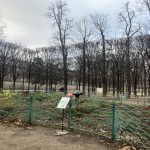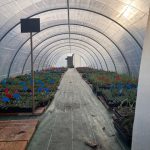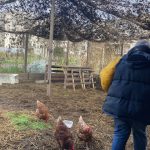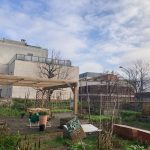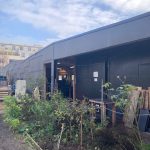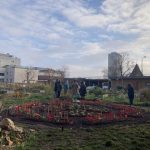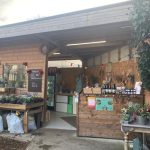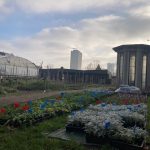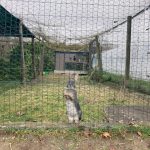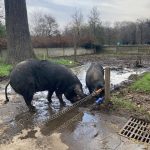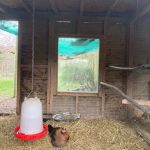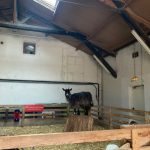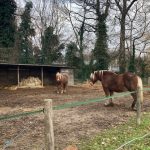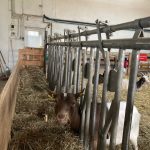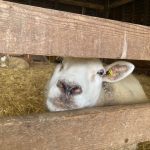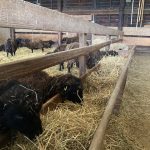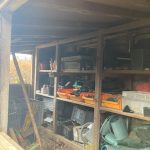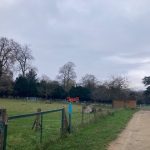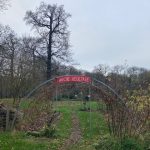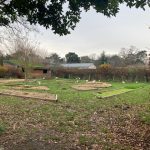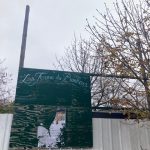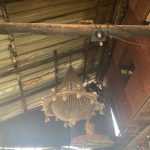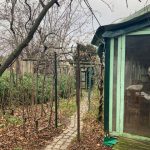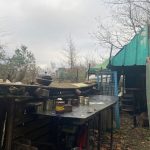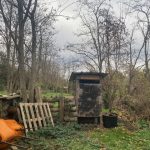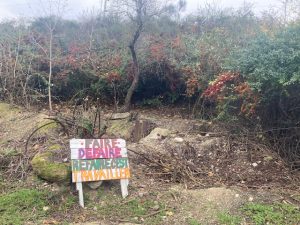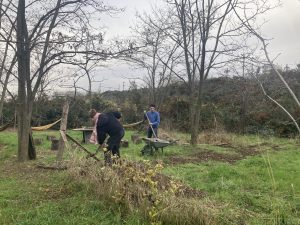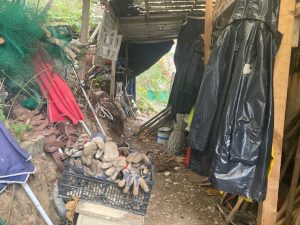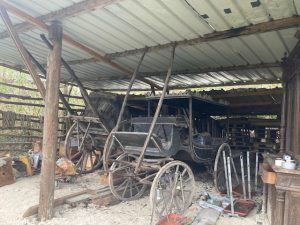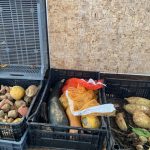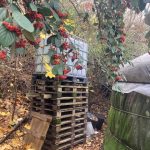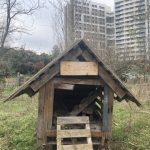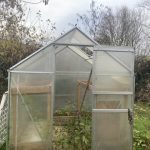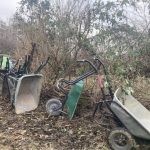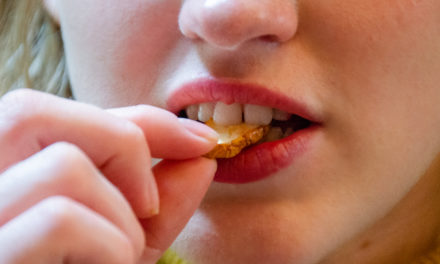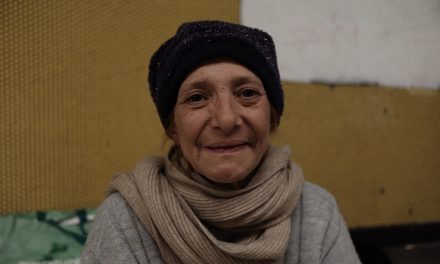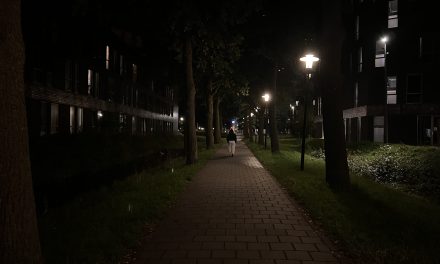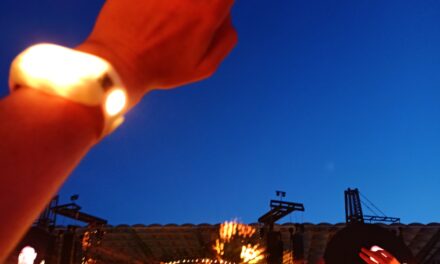Today, more than half of the world’s population live in cities. This figure is expected to rise to 68% by 2030, according to the United Nations.
Alongside this according to a report carried out by HLPE. 2024. Strengthening urban and peri‑urban food systems to achieve food security and nutrition, in the context of urbanization and rural transformation. Rome, CFS HLPE‑FSN
Explains that “More than 70% of the world’s food is consumed in Urban areas. Thus, urban and peri‑urban food systems have the power to shape the entire food system of their countries.”
The Report also displays that “of the 2.2 billion moderately and severely food insecure people in the world, 1.7 billion live in urban and peri‑urban areas.”
“When we work with nature there’s another lesson you know you have not to expect a result tomorrow the result may be for your sons or the son of your sons don’t care it’s time to stop it’s time to slow.” expresses Roger des Prés, founder of Ferme du Bonheur.
In terms of the EU 75% of its citizens live in Urban areas, according to food2030 conference outcome report, 2023.
In the European union projects are already underway to protect food security and adjust to rapid urbanization. As already mentioned, Food 2030 Eu’s mission is to transition to create healthy, sustainable, and comprehensive food systems. Where one of its main pathways is Urban food system transformation.
The EU’s mission of achieving 100 climate-neutral cities by 2030 voices the importance of climate-neutral and smart cities is crucial for our future, ‘cities consume over 65% of the world’s energy and account for more than 70% of global CO2 emissions.
Since climate mitigation is heavily dependent on urban action, we need to support cities in accelerating their green and digital transformation. European cities can substantially contribute to the Green Deal target of reducing emissions by 55% by 2030 and, in more practical terms, to offer cleaner air, safer transport and less congestion and noise to their citizens.’
“Yes, show people that the product locality is better than food coming from other lands even Normandy or Britannia but the more you reduce the distance of getting food is better for the planet and also for people because there will be jobs also in this development of agriculture in the city.” expressed Marcela Delormel, conseillere enviroment, at La ferme de Paris.
So, what are EU cities actually doing to combat food insecurity and reach these climate action goals?
Let’s take a look at Paris, an interesting observation about the city, just by walking around the streets you are met with the sight of green rooftops, planted walls, community gardens. If you look for it Paris is a lot greener than one may expect.
- Green walls
- Community Garden
- Green Rooftop
What is Urban agriculture and why is it a solution to Food security?
Urban agriculture (UA) can be described as the ‘practice of cultivating, processing, and distributing food in and around urban areas,’ Eu commissions Agri research.
A journal published by science direct explained that ‘UA may enhance community food security by increasing the diversity, quantity, and quality of many perishable foods in urban areas.’
Paris has implemented many projects in order to promote Urban agriculture around the city. Including the Les Pariscuteurs project, launched in 2016, the city of Paris generated this programme which aims to ‘facilitate and accelerate the installation of agriculture projects in Paris and il-de-France.
Finding sites such as walls, parking lots, and even rooftops and granting the possibility for farmers to produce there.
Now with over 70 successful projects and many more underway the city of Paris is now home to almost 36 hectares of agricultural land.
Le paysan Urbain
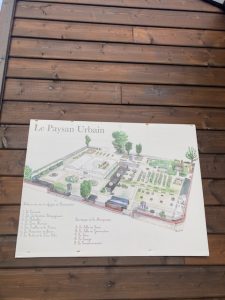
Beginning in the suburbs of Paris in 2016, to winning the first edition of the parisceulters Le Paysan Urbain.
From financial consultant to now co-founder of Le Paysan Urbain Gérard Munier took motivation from his late father who was a farmer in the east of France. “When I was young, very young, when I was on my father’s farm, I remember the pleasure to eat something I find all around me, you know and it’s very important to keep the contact with alimentation,” said Munier.
Located just over 5 kilometers from the centre of Paris, a charming farm on a slight hill that is home to edible flowers and leaves, chickens, microgreens and much more.
Le Paysan Urbain uses a mixture of agro-ecology strategies and social inclusion throughout their farmwork.
With over 500 people visiting in peak summer months. The farm makes efforts to be extensively inclusive. Creating jobs for a wide range of individuals including the elderly, people with disabilities, young individuals who do not have access to education, refugees, single mothers and much more.
“It is a mix of these people, and we help these people to recover hope first, recover dignity and confidence,” explained Gérard Munier.
“It is a place of meeting and working together. It is very important, and we have a lot of volunteers working with the team,” Munier added.
Planted over their 10,000 square meter soil are a range of ecological plantations. “The environmental purpose is to manage microgreens, edible flowers, plants, flowers for decoration, aromatic plants, infusions,” says Munier.
So, how is this farm contributing to food security?
While the heavily involved community can certainly learn from Le Paysan Urbain and take some of the practices home Munier expressed that “urban agriculture couldn’t replace the conventional one.”
Paris as we know it is home to many urban farms between the city’s streets however, with just a quick 20-minute drive away from Le Paysan Urbain lies a larger, scenic and rural farm in Paris.
Le Ferme de Paris
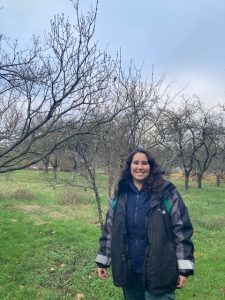 A five-hectare space that opened to the Public March 1989, this farm is home to many animals and plants alike that work together in all natures glory.
A five-hectare space that opened to the Public March 1989, this farm is home to many animals and plants alike that work together in all natures glory.
“We work for applied environmental politics for sustainable alimentation and agroecology. So, it is why we show some animals who work also with us.” explains Marcela Delormel, farmer.
Within the farm there is La Mer, which is a small body of water home to many species of biodiversity. The water is cleaned through a filter that also collects rainwater, nothing here goes to waste. “We cause the biodiversity with places like this because they help us with the pollination.” Explains Delormel, “If you have life, calls life.”
The huge space and range of animals is something you do not expect to see so close to Paris. The farm prioritizes the surrounding community with workshops for the youth of the area to get hands-on experience with animals and educate them on how to grow their own food at home. “It’s important that we show people who visit the farm what we do and with the practice because here for example is a place where we work in collaboration, So, people can come one day per month and we work and they learn the permaculture of the farm.” says Delormel.
The Farm is operated from the city of Paris as they are part of the Paris municipality’s goals concerning sustainable urban agriculture around the city. With this they can work on producing food for local people, that can be picked up when visiting the farm, shortening the journey of food and consumption. Additionally helping the food security of the city.
There are surrounding projects in nearby lands that produce to sell “Now there is a project of developing local production and so this farm received two women who worked there and they sold their production to the people who visit the farm and also for the restaurants next to Paris so yeah this kind of project can do show people that we can produce in the locality.” Delormel explained.
Farms like these are crucial for cities like Paris, for education, Food security, and Jobs.
However, as city populations grow, the need for sustainable urban agriculture grows alongside with it. The reliance on food from conventical industrial farming needs to be reduced. According to an article published by science direct regarding cities and their ability to become self-reliant on food suggests that “As a result of globalization, the consumer has been separated from the producer and thereby no longer witnesses the detrimental effects of consumerism: depletion of finite resources, pollution of natural environments, and accumulation of waste.”
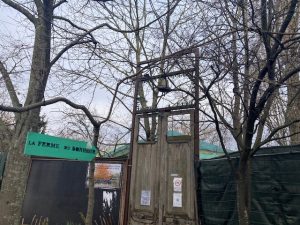
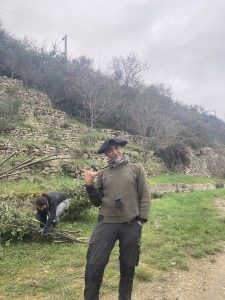 One of the most peculiar Farms in Paris is in Nanterre.
One of the most peculiar Farms in Paris is in Nanterre.
A mixture of arts, culture, passion, and agriculture lies across two locations just a 5-minute walk from another Le ferme de Bonheur, ‘The farm of Happiness,’ and Le champ de la Garde.
Upon arrival at Le ferme de bonheur you are first met with chickens roaming the surrounding area. You will eventually come to the entrance which is a wooden door with a large bell that can be rung right at the very top. Before entry you can peep through some cracks and you will see circus tents, old structures of shelter and two large peacocks.
A place that was once home to extravagant parties and theatrical shows. You can see that the place holds memory, nostalgia, art, and eeriness.
Owner Roger des Prés has had this space for over 30 years, with struggles along the way, wars against the city. They were asked to move, to be replaced by big buildings, however, here they still stand.
Their agricultural land is just a short walk away from the madness, where many volunteers from many walks of life come and help.
Le Champ de la Garde
Roger feels particularly passionate about using no machinery and teaching people to only use their hands to get the farm work done. Alongside this there is a huge emphasis on community here and you can feel it once you enter their space. Through tea and coffee breaks, laughter and banter and the simple love and passion for the farm.
The farm uses its small space to the maximum, with many different areas used to plant various types of crops. Roger believes in eating his own products even if he is not allowed to sell them to the public.
With a space like this comes many challenges, lucky to have volunteers and loyal workers, Roger emphasizes the stress humanity has caused to our earth and feels passionate about using these spaces around big cities to produce locally to stop food insecurity. Other challenges such as funding also arise for Rodger as most of the money that goes into space is from his theater shows, which cannot be performed without his animals and plants. However, these shows are not as often as they once used to be.
Following these three very different farms it is clear that Paris is one example of a European city that has adopted the urban agriculture philosophy and lifestyle to improve the lives of its residents. With a combination of public assistance, individual incentives, and efforts, it is obvious that urban agriculture can be successful in huge cities like Paris. To combat food insecurity and transition to a more sustainable, dependable, and significant way of life.
